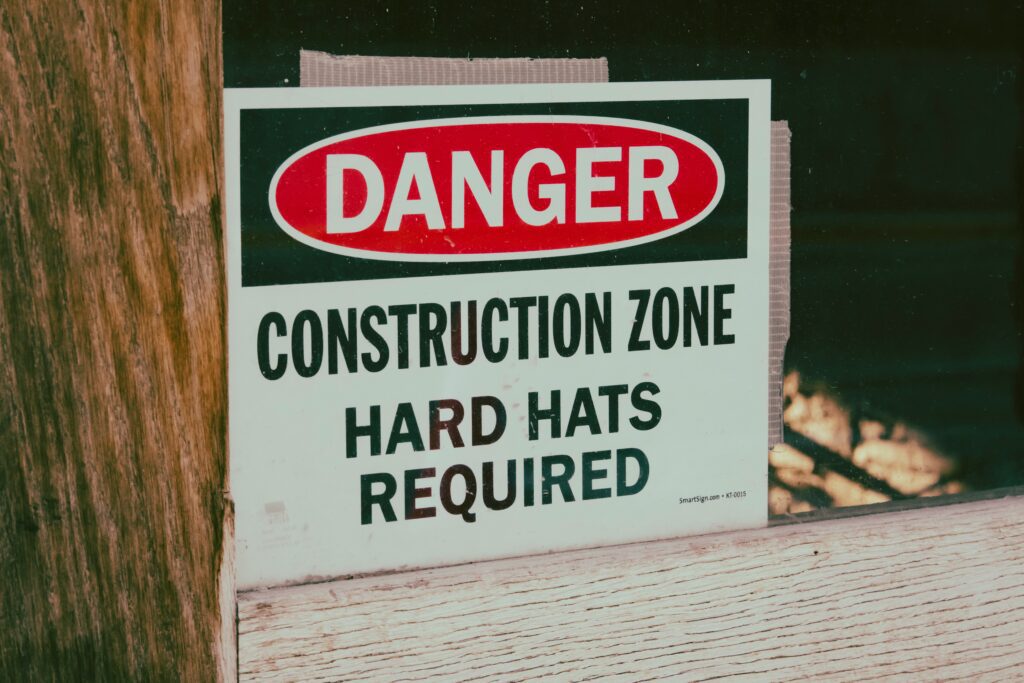Introduction
Of all occupational illnesses, Noise-Induced Hearing Loss (NIHL) is one of the most common and entirely preventable. Once the delicate hair cells in the inner ear are damaged, they cannot regenerate, making hearing loss permanent.
The Centers for Disease Control and Prevention (CDC) estimates that 22 million U.S. workers are exposed to hazardous noise annually. Without proper safety measures, these workers risk losing a vital sense: hearing. This condition often develops over time, so workers may not realize the damage until it’s too late. What starts as occasional ringing in the ears can eventually lead to irreversible hearing loss.
How NIHL Happens
Noise-Induced Hearing Loss occurs when prolonged exposure to loud sounds overstimulates the sensory cells in the cochlea (inner ear). This overstimulation leads to cell death, and once these cells are destroyed, they cannot grow back. Over time, the damage accumulates and can result in permanent hearing impairment.
Exposure to sounds above 85 dB (decibels) is especially dangerous. The effects of noise exposure depend on both the volume of sound and the duration of exposure. Workers in environments with continuous or repetitive noise are at greater risk of developing NIHL. Common effects of noise exposure include:
Difficulty hearing high-pitched sounds: For example, the inability to hear squeaky sounds or birdsong.
Trouble understanding speech in noisy environments: Difficulty hearing conversations in places like crowded offices, factories, or construction sites.
Persistent tinnitus: A ringing or buzzing sound in the ears that persists even after the noise has stopped.
Sounds and Their Impact on Hearing
85 dB: Threshold for hearing protection required in workplaces (e.g., some factories, machinery).
100 dB: Exposure should be limited to less than 2 hours per day (e.g., jackhammers, loud engines).
120 dB and above: Immediate risk to hearing. Exposure should be less than 15 minutes (e.g., jet engines, sirens).
High-Risk Workplaces
Certain workplaces pose a higher risk for Noise-Induced Hearing Loss due to the nature of the work and the noise levels involved. Some of the most common high-risk environments include:
1. Metal Fabrication Shops
Welding machines, cutting tools, and machinery in these environments regularly exceed 85 dB, putting workers at risk of hearing damage if proper protections aren’t used.
2. Textile Factories
Industrial sewing machines, looms, and other high-speed machinery create constant noise exposure for workers, particularly in the textile and garment manufacturing sectors.
3. Road Construction Sites
The machinery used in construction, such as jackhammers, bulldozers, and paving machines, can exceed 100 dB, creating a significant risk for workers exposed to these noises daily.
4. Fire and Emergency Services
Sirens, engines, and the constant noise of emergency operations place firefighters, emergency medical responders, and police officers at high risk of hearing loss.
5. Military Training Zones
Gunfire, explosions, and jet engines all exceed safe noise limits, leading to long-term hearing damage for military personnel.
Prevention and OSHA Compliance
To protect workers from Noise-Induced Hearing Loss, OSHA (Occupational Safety and Health Administration) requires employers to take specific measures when noise exposure reaches or exceeds 85 dB over an 8-hour shift. This is part of OSHA’s Hearing Conservation Program. The program includes the following key elements:
1. Noise Monitoring
Employers must regularly measure noise levels in the workplace using sound level meters to assess whether they exceed OSHA’s recommended limits. Regular monitoring ensures that high-risk areas are identified and addressed.
2. Annual Hearing Tests
Employers are required to provide hearing tests at no cost to workers, typically through an audiometric testing program. These tests can detect early signs of hearing loss, so that interventions can occur before damage becomes irreversible.
3. Provision of PPE
Employers must provide hearing protection (such as earplugs or earmuffs) to workers exposed to noise levels above 85 dB. The type of hearing protection should match the noise level and the nature of the work environment.
Employers are also required to ensure that hearing protection is used properly and that it fits comfortably.
4. Employee Training
Training programs should educate workers about the risks of noise exposure, how to use hearing protection correctly, and the importance of annual hearing tests. Training should also include information on signs of hearing loss and the importance of protecting hearing both at work and in personal life.
5. Recordkeeping of Exposure Levels and Hearing Tests
Employers must maintain accurate records of workers’ noise exposure levels, hearing tests, and any corrective actions taken. These records must be kept for at least 30 years to comply with OSHA’s standards.
Worker’s Role in Prevention
While employers play a crucial role in protecting workers from Noise-Induced Hearing Loss, employees also have responsibilities when it comes to preventing hearing damage:
1. Always Wear Assigned Hearing Protection
Even if hearing protection is uncomfortable, workers should always wear the provided earplugs or earmuffs in noisy areas to minimize their risk of hearing loss.
2. Report Malfunctions in Safety Equipment
If hearing protection or other safety equipment is not functioning properly, it is the worker’s responsibility to report it to their supervisor immediately. Malfunctions can result in increased noise exposure and greater risk.
3. Take Hearing Tests Seriously
Workers should actively participate in annual hearing exams and take the results seriously. If any changes in hearing are detected, workers should seek immediate medical advice.
4. Avoid Unnecessary Exposure to Loud Environments Outside Work
In addition to wearing hearing protection at work, workers should also avoid excessive exposure to loud sounds outside the workplace (e.g., loud music, concerts, or fireworks) to give their ears time to recover.
Conclusion
Noise-Induced Hearing Loss (NIHL) is a lifelong condition, but it’s also 100% preventable with the right workplace policies and worker cooperation. By implementing OSHA-compliant programs, providing proper hearing protection, and educating employees about noise hazards, employers can safeguard workers’ hearing and protect their overall health.
Protect your hearing today to avoid silent suffering tomorrow. Workers should take responsibility for their own hearing protection, but employers must also be proactive in ensuring that the workplace is safe. By working together, NIHL can be prevented, and employees can continue to enjoy healthy hearing for years to come.


